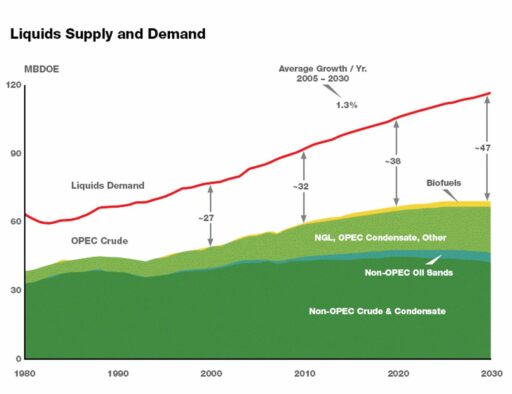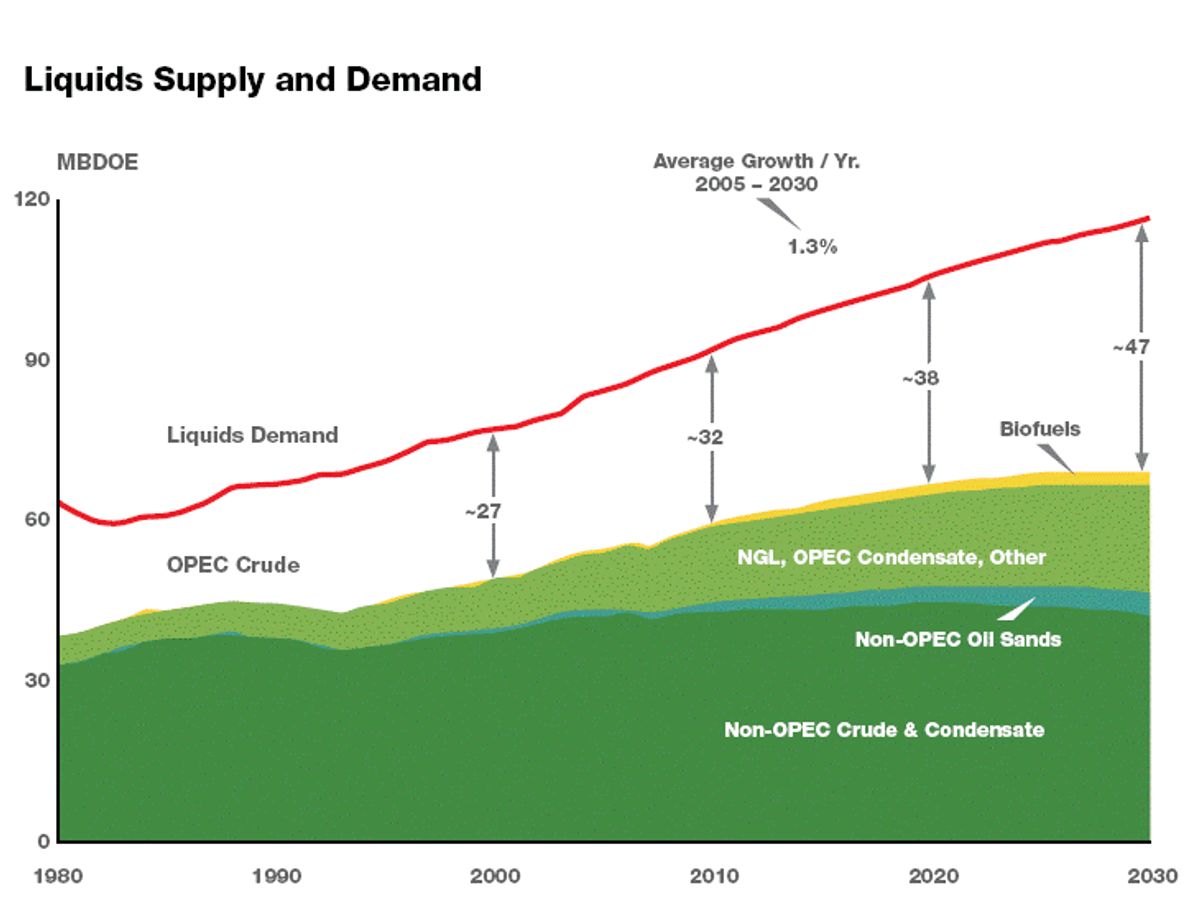Exxon Mobil Corporation (XOM), a titan in the oil and gas industry, has been a focal point for investors seeking to capitalize on the dynamic energy market. With its stock performance reflecting the company’s resilience and strategic initiatives, this article delves into the intricacies of Exxon Mobil’s market position, strategic moves, dividend history, options trading, and broader economic impact. We dissect recent developments, such as potential acquisitions and market sentiment, to provide a comprehensive analysis of Exxon Mobil’s investment potential.
Key Takeaways
- Exxon Mobil’s stock has shown resilience with a significant rebound from post-Covid lows, suggesting a strong recovery in its market position.
- The company is considering a major strategic acquisition of Pioneer Natural Resources, which could further solidify its industry dominance.
- Exxon has consistently provided shareholders with dividends, maintaining an appealing yield range over the past decade.
- Options trading activity indicates bullish market sentiment, with substantial volume in both calls and puts for Exxon Mobil.
- Despite the transition to renewable energy, Exxon Mobil remains a compelling investment, especially as part of a diversified portfolio.
Understanding Exxon Mobil’s Current Market Position

Recent Stock Performance and Volume Analysis
Exxon Mobil Corporation (XOM) has demonstrated resilience in the stock market, reflecting investor confidence and a robust business model. The stock is currently trading at $108.55, with a slight increase of 0.16%. This subtle uptick is accompanied by a trading volume of 3,574,140, indicating active market participation.
The Relative Strength Index (RSI) hints at a potential approach towards overbought territory, signaling traders to be cautious.
With the next earnings release scheduled in 46 days, investors are closely monitoring the company’s performance metrics and market indicators. The anticipation surrounding these earnings is palpable, as they could significantly influence the stock’s trajectory.
Here’s a quick glance at XOM’s recent stock performance:
| Date | Closing Price | Volume |
|---|---|---|
| Current | $108.55 | 3,574,140 |
| D-1 | $108.37 | 3,500,000 |
| D-7 | $107.80 | 4,000,000 |
This table encapsulates the stock’s performance over the past week, providing a snapshot of its stability and liquidity in the market.
Technical Indicators and Earnings Projections
Exxon Mobil’s stock analysis reveals a positive outlook based on current technical indicators. The latest MACD of 2.10 suggests a bullish trend, while an RSI of 73.39 indicates that the stock may be approaching overbought territory, warranting caution among investors.
The convergence of technical indicators with earnings projections provides a nuanced view of Exxon Mobil’s potential performance.
Earnings projections for Exxon Mobil are critical for investors, as they reflect the company’s profitability and future growth prospects. Analysts’ consensus estimates can offer insights into the market’s expectations and influence stock price movements.
Here is a summary of the key technical indicators and earnings projections:
| Indicator | Value |
|---|---|
| MACD | 2.10 |
| RSI | 73.39 |
Understanding these metrics in the context of broader market conditions and Exxon Mobil’s strategic initiatives is essential for making informed investment decisions.
Comparative Performance: Exxon Mobil vs. Other Energy Stocks
In the competitive landscape of energy stocks, Exxon Mobil (XOM) stands out with its robust recovery and strategic financial maneuvers. The stock has surged approximately 175% from its 2021 lows, showcasing resilience and investor confidence. This performance is particularly notable when juxtaposed with the broader S&P 500 index, where Exxon Mobil has been one of the top performers.
Comparing Exxon Mobil’s stock to its peers, we observe a consistent effort to enhance shareholder value through dividends and debt reduction. Here’s a snapshot of Exxon Mobil’s financial strategy:
- Debt reduction initiatives
- Consistent dividend increases
- Cost-cutting measures
Exxon Mobil’s strategic focus on financial health and shareholder returns positions it favorably against other energy stocks, which may not have matched its post-pandemic recovery pace or dividend reliability.
Analysts have a positive outlook for Exxon Mobil, projecting an earnings per share (EPS) increase to $8.28 in 2024, a significant jump from the $5.39 during the pandemic’s nadir. This anticipated growth, coupled with the company’s performance, underscores its potential as a resilient investment in the energy sector.
The Strategic Moves Shaping Exxon Mobil’s Future
Potential Acquisition of Pioneer Natural Resources
Exxon Mobil’s potential acquisition of Pioneer Natural Resources is a strategic move that could significantly bolster its position in the Permian Basin. The deal, valued at approximately $60 billion, represents a major step in consolidating Exxon’s oil operations and could set a precedent for future mergers and acquisitions within the industry.
The acquisition is expected to bring new technologies and longer laterals to Exxon’s already extensive acreage, enhancing its production capabilities. This move comes at a time when the industry is facing increased scrutiny and regulatory pressures, particularly regarding environmental concerns.
The merger between Exxon Mobil and Pioneer Natural Resources is anticipated to create a Permian powerhouse, with synergies that could lead to more efficient extraction and production processes.
While the deal is still under review by the Federal Trade Commission, both companies remain optimistic. Pioneer has announced the results of a special meeting, indicating that they continue to work constructively with regulatory bodies. The completion of this merger could trigger a flurry of similar transactions in the shale industry, as companies strive to remain competitive in a challenging market.
Investment in Reducing Debt and Increasing Dividends
Exxon Mobil has been strategically focusing on strengthening its balance sheet by reducing debt, a move that is often well-received by investors. Reducing debt enhances the company’s financial flexibility and resilience against market volatility. This commitment to financial health is also reflected in their approach to dividends.
Exxon Mobil’s dedication to providing shareholders with consistent and growing dividends is evident from its historical performance. The company has not only maintained but also increased its dividend payouts, reinforcing its status as a reliable dividend-paying stock.
The increase in dividends, coupled with a reduction in debt, signals a strong vote of confidence in the company’s future profitability and cash flow stability.
Here’s a snapshot of Exxon Mobil’s recent dividend history:
| Year | Dividend per Share |
|---|---|
| 2020 | $3.48 |
| 2021 | $3.52 |
| 2022 | $3.58 |
The incremental rise in dividends showcases Exxon Mobil’s commitment to shareholder returns, even amidst fluctuating market conditions.
Navigating Market Conditions with Rising Interest Rates and Oil Prices
As Exxon Mobil navigates the complex market conditions, the company faces the dual challenge of rising interest rates and fluctuating oil prices. The recent surge in oil prices, with crude reaching its highest level in 2023, has implications for Exxon Mobil’s operational costs and profit margins.
Experts are predicting oil could hit US $100 per barrel by year-end, which could significantly impact Exxon Mobil’s earnings. A company plan published by Exxon Mobil on Dec. 6 aims to double earnings by 2027, assuming Brent crude oil prices average $60 per barrel. Even if Brent crude prices vary, the strategic focus remains on maintaining a robust financial framework to withstand market volatility.
In response to these conditions, Exxon Mobil is likely to continue its disciplined investment approach, focusing on high-value projects with quick paybacks and prioritizing cash flow generation over volume growth.
The following table summarizes the recent trends in oil prices and their potential impact on Exxon Mobil:
| Date | Event | Impact on Exxon Mobil |
|---|---|---|
| Sep 15, 2023 | Crude prices climb to highest level of 2023 | Increased revenue potential |
| Sep 18, 2023 | Experts warn of $100 per barrel oil | Potential earnings boost |
| Aug 29, 2023 | North America Rig Loss Streak | Operational challenges |
| Sep 6, 2023 | The Texas Electric Grid Is Tired | Energy supply concerns |
The company’s ability to adapt to these dynamic market conditions will be crucial for its long-term success and shareholder value.
Exxon Mobil’s Dividend History and Investment Appeal
A Decade of Dividend Yields: Analyzing the Trends
Exxon Mobil has consistently demonstrated a commitment to returning value to shareholders through its dividends. Over the past decade, the company has not only maintained but often increased its dividend payouts, showcasing a trend that is particularly attractive to income-focused investors. The resilience of Exxon Mobil’s dividend policy reflects its operational stability and strategic financial management.
| Year | Dividend Yield (%) |
|---|---|
| 2013 | 2.7 |
| 2014 | 2.9 |
| 2015 | 3.5 |
| 2016 | 3.7 |
| 2017 | 3.8 |
| 2018 | 4.0 |
| 2019 | 5.0 |
| 2020 | 7.9 |
| 2021 | 5.6 |
| 2022 | 4.1 |
The table above succinctly presents the dividend yields for Exxon Mobil over the last ten years, highlighting the significant increase during the tumultuous market conditions of 2020. Despite market volatility, Exxon Mobil’s dividends have remained a beacon of consistency, underpinning the stock’s appeal as a reliable income-generating asset.
While the future of energy is in flux with the transition to renewable sources, Exxon Mobil’s dividend history stands as a testament to its enduring value proposition for shareholders. The company’s ability to sustain and grow its dividends in various economic climates is a key factor in its investment appeal.
The Case for Including Exxon Mobil in a Diversified Portfolio
In the realm of investment, diversification is a cornerstone strategy to mitigate risk. Exxon Mobil represents a compelling addition to a diversified portfolio, particularly for investors seeking a balance between growth and income. With a history of robust dividend yields ranging from 2.51% to 9.14% over the past decade, Exxon Mobil has demonstrated a commitment to returning value to shareholders.
The company’s resilience is evident in its recovery from the pandemic’s impact, with its stock price soaring approximately 175% from the 2021 lows. This recovery underscores Exxon Mobil’s ability to navigate market volatility and maintain a strong financial position. Moreover, the potential acquisition of Pioneer Natural Resources, estimated at $60 billion, signals Exxon Mobil’s strategic intent to solidify its market dominance and could further enhance its portfolio’s appeal.
While the energy sector is undergoing a transition towards renewables, the enduring demand for oil and gas ensures that Exxon Mobil remains a relevant player in the energy mix. This positions the company as a prudent choice for investors looking to benefit from the sector’s current dynamics while hedging against the uncertainties of the future.
Given these factors, Exxon Mobil stands out as a stock that can offer both stability and the potential for capital appreciation, making it a worthy consideration for inclusion in a well-rounded investment portfolio.
Renewable Energy Transition and Exxon Mobil’s Position
As the global energy landscape shifts towards sustainability, Exxon Mobil is positioning itself to be a part of the renewable energy transition. The company has acknowledged the importance of evolving its business model to include low-carbon energy solutions. One such initiative is the exploration of opportunities to combine biomass-based fuel production with carbon capture and storage, aiming for very low- or negative-carbon intensity fuel.
Exxon Mobil’s approach to the renewable transition is multifaceted, involving strategic investments and research into alternative energy sources. Below is a summary of their key focus areas:
- Advancing biofuel technology
- Expanding carbon capture and storage (CCS) capabilities
- Researching hydrogen as a potential energy source
- Developing renewable diesel and jet fuel
While the company is making strides in these areas, it is also mindful of the need to maintain a balance between traditional energy operations and new ventures. The transition is a complex process that requires careful planning and execution to ensure long-term viability and shareholder value.
Options Trading Insights: Analyzing Market Sentiment

Volume and Open Interest Development for XOM Options
The analysis of volume and open interest for Exxon Mobil’s options provides a snapshot of market liquidity and trader interest. Over the past 30 days, a notable range of strike prices from $105.0 to $125.0 has seen significant activity. The bullish sentiment is evident, with large trades indicating confidence in the stock’s future performance.
| Strike Price | Sentiment | Volume | Open Interest |
|---|---|---|---|
| $110.00 | Bullish | 71 | 5.8K |
| $105.00 | Bullish | 1.2K | 7.4K |
| $105.00 | Bullish | 311 | 5.8K |
| $110.00 | Bullish | 582 | 2.6K |
| $110.00 | Bullish | 5 | 4.5K |
The consistent increase in open interest alongside volume growth suggests a robust engagement from options traders.
As we dissect these figures, it’s crucial to consider the broader context of Exxon Mobil’s stock performance, which has seen a steady uptick in price, reinforcing the optimistic outlook derived from options market activities.
Dissecting the Largest Options Trades and Their Implications
The landscape of options trading for Exxon Mobil reveals a pattern of significant trades that can offer insights into market sentiment. Large options transactions are often indicative of how sophisticated investors are positioning themselves for future stock movements. A recent scan by Benzinga’s options scanner identified over 13 option transactions with a cumulative value exceeding $421,000. Concurrently, puts worth nearly $383,000 were also noted, suggesting a nuanced sentiment among traders.
Options trading, while riskier, holds the potential for substantial profits. Traders mitigate this risk through continuous education, diversifying indicators, and close market monitoring. For those keen on following Exxon Mobil’s options activity, real-time alerts are essential.
| Trade Type | Sentiment | Exp. Date | Strike Price | Total Trade Price | Open Interest | Volume |
|---|---|---|---|---|---|---|
| PUT TRADE | BULLISH | 01/17/25 | $110.00 | $64.7K | 5.8K | 71 |
| PUT SWEEP | BULLISH | 04/19/24 | $105.00 | $57.4K | 7.4K | 1.2K |
| PUT SWEEP | BULLISH | 06/21/24 | $105.00 | $50.3K | 5.8K | 311 |
The volume and open interest development for Exxon Mobil’s options are critical metrics for gauging liquidity and market interest. Tracking these figures can provide a clearer picture of the underlying momentum and potential shifts in investor behavior.
Understanding the Bullish Sentiment in Exxon Mobil’s Options Market
The options market for Exxon Mobil (XOM) has been displaying a notably bullish sentiment, as evidenced by recent trading activities. Benzinga’s options scanner revealed a series of transactions that underscore this optimism. For instance, a significant number of call options have been traded, suggesting that investors are betting on Exxon Mobil’s stock price to rise.
The concentration of bullish trades in both calls and puts indicates a strong belief in the stock’s potential upside.
A closer examination of the options trades reveals a pattern of bullish sentiment across various expiration dates and strike prices. Here’s a snapshot of the most significant options trades:
| Symbol | Trade Type | Sentiment | Exp. Date | Strike Price | Total Trade Price | Open Interest | Volume |
|---|---|---|---|---|---|---|---|
| XOM | PUT TRADE | BULLISH | 01/17/25 | $110.00 | $64.7K | 5.8K | 71 |
| XOM | PUT SWEEP | BULLISH | 04/19/24 | $105.00 | $57.4K | 7.4K | 1.2K |
| XOM | CALL TRADE | BULLISH | 09/20/24 | $110.00 | $44.8K | 2.6K | 582 |
The data suggests that traders are positioning for a price target within the $105.0 to $125.0 range, aligning with the market’s bullish outlook on Exxon Mobil.
Exxon Mobil in the Broader Economic Context

Impact of Global Economic Trends on Exxon Mobil
JSON
Oil’s Staying Power and Exxon Mobil’s Strategic Bets
Exxon Mobil’s commitment to the oil industry is unwavering, even as the global energy landscape shifts towards renewables. The company’s strategic bets are evident in its potential acquisition of Pioneer Natural Resources, a move that could significantly bolster its shale oil capabilities. This acquisition is a clear indication of Exxon’s belief in oil’s staying power.
The company is not just expanding its portfolio; it’s also investing in the future. Exxon plans to channel over $20 billion into lower-emission investments from 2022 through 2027, focusing on technologies and projects that reduce environmental impact. This dual approach of strengthening core oil assets while investing in cleaner technologies showcases Exxon’s adaptive strategy in a changing market.
While the energy transition is underway, Exxon’s strategic investments suggest a calculated balance between traditional oil ventures and the emerging demand for cleaner energy solutions.
The following table outlines Exxon’s recent strategic moves:
| Year | Strategic Move | Expected Impact |
|---|---|---|
| 2022 | Acquisition talks with Pioneer | Expand shale operations |
| 2022-2027 | $20 billion in lower-emission investments | Reduce environmental footprint |
Exxon’s stock performance reflects the company’s resilience and adaptability. Despite market volatility and the push for renewables, Exxon’s stock has shown robust growth, trading approximately 175% above its 2021 lows. This growth is a testament to the company’s strategic foresight and its ability to navigate the complexities of the energy market.
The Role of Big Oil in the Current Energy Landscape
In the current energy landscape, Big Oil companies like Exxon Mobil are at a crossroads. The industry faces a dual challenge: maintaining profitability in the traditional oil and gas sectors while navigating the transition to renewable energy sources. Despite the rhetoric of a shift towards greener energy, the economic viability of renewables at scale remains a contentious issue.
- Big Oil argues that renewables are not yet economically viable at scale.
- The profitability of fossil fuels continues to overshadow that of renewable energy investments.
- Significant capital is still being directed towards fossil fuel projects.
The strategic decisions made by these companies today will have long-lasting implications on the global energy mix and environmental sustainability.
The recent wave of mergers and acquisitions, including Exxon Mobil’s, indicates a consolidation trend within the industry. This movement is reshaping the competitive landscape and could potentially streamline operations, reduce costs, and enhance the ability to invest in new technologies.
Conclusion
In summary, Exxon Mobil (XOM) presents a compelling case for investors seeking a robust stock with a history of resilience and growth. The company’s recovery post-Covid and strategic moves, including potential acquisitions like that of Pioneer Natural Resources, signal a strong commitment to maintaining its industry-leading position. Despite the shift towards renewable energy, Exxon’s attractive dividend yield and its status as a top performer in the S&P 500 underscore its relevance in a diversified investment portfolio. While the stock may be approaching overbought territory, the bullish sentiment in options trading and positive earnings projections provide a favorable outlook. Investors should consider market conditions, such as rising interest rates and oil prices, and employ strategies like dollar-cost averaging to navigate the investment landscape. As always, it’s crucial to stay informed and weigh the risks and rewards before making investment decisions.
Frequently Asked Questions
What is the current market position of Exxon Mobil stock (XOM)?
Exxon Mobil (XOM) is currently trading with a volume of 3,574,140, and its price is up by 0.16%, now at $108.55. The stock has shown a sharp rebound since the post-Covid slump in 2020, growing over +250% from $30 to more than $100.
What are the recent technical indicators and earnings projections for XOM?
Recent RSI readings suggest XOM may be approaching overbought territory. Analysts expect Exxon to earn $8.28 per share in 2024, which is up over +53% from the Covid lows in 2021. Projected EPS for April 2024 is $2.22.
How does Exxon Mobil’s dividend history appeal to investors?
Exxon has been paying an annual dividend with a yield between 2.51% and 9.14% in the past decade, making it an attractive stock for investors seeking consistent dividend income.
What strategic moves are shaping Exxon Mobil’s future?
Exxon is reportedly considering a $60 billion acquisition of Pioneer Natural Resources and has been focusing on reducing debt, cutting costs, and increasing dividend payouts to navigate the current market conditions.
What is the sentiment in Exxon Mobil’s options market?
Benzinga’s options scanner identified bullish sentiment in the options market for Exxon Mobil, with significant trading volumes in both calls and puts, suggesting a positive outlook among investors.
What impact do global economic trends have on Exxon Mobil?
Global economic trends such as rising interest rates, oil prices, and the transition to renewable energy are shaping Exxon Mobil’s strategy, with the company making bets on oil’s staying power and strategic acquisitions.





